A globetrotting couple, drawn to both the modern farmhouse and coastal home aesthetics, achieves the best of both worlds, under the guidance of Design Director, Tyler Wisler and his team.
How does one turn a coastal home into a modern farmhouse? This was the question that Chung and Catherine sought to answer with the help of Tyler and his team.
“Given that Chung was also from the States, there was already an instant level of understanding when he and Catherine wanted the perfect marriage (of both styles). Their request to keep things open and relaxed, but for every detail to be considered, was something that spoke to me instantly,” says Tyler.
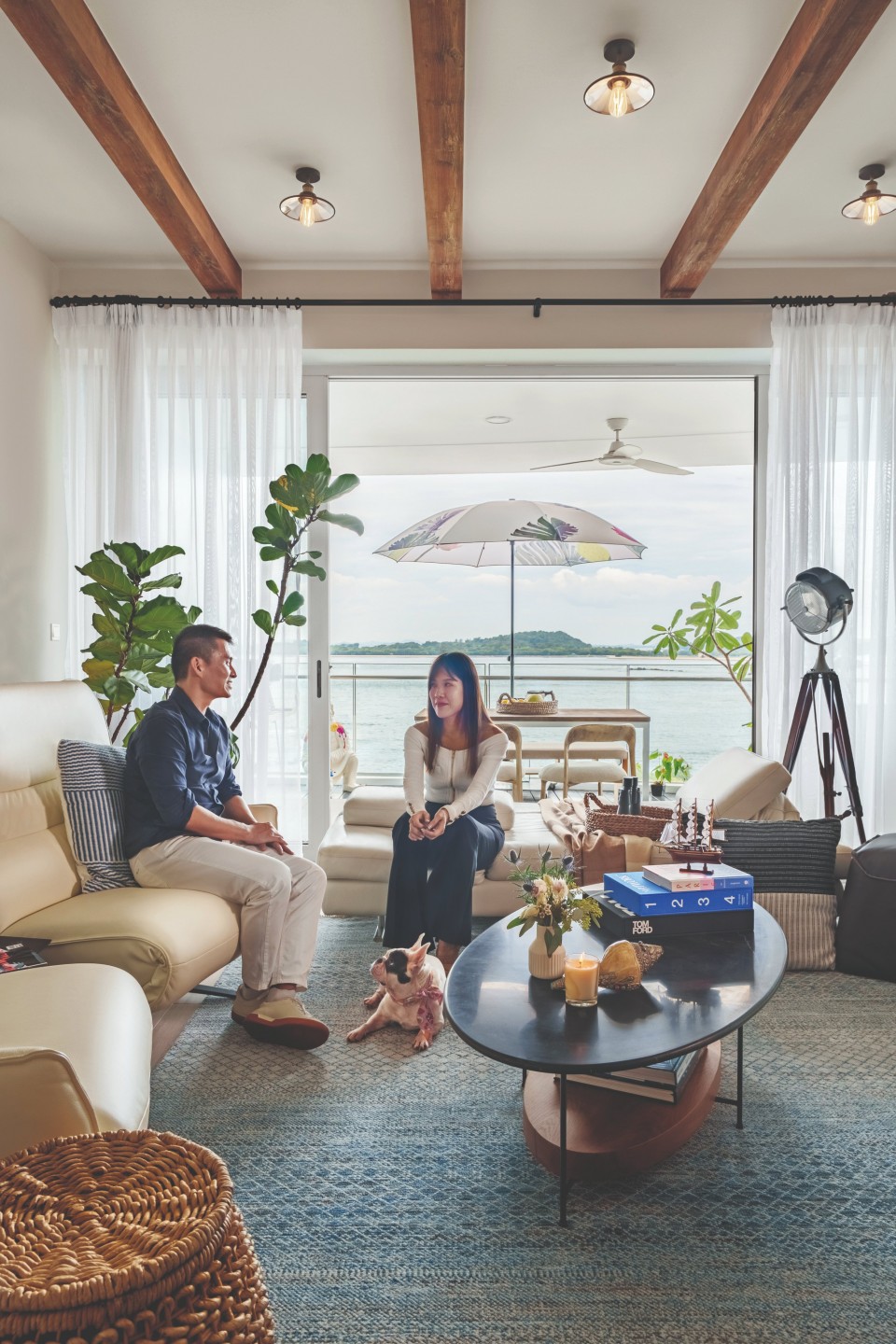
Chung and Catherine may have called Singapore home for the past eight years, but their travels through different countries and cultures have shaped their tastes profoundly.
“Art and style are more than just hobbies to us; they’re threads woven into the fabric of our daily lives. Likewise, our home here is more than just a place to live; it’s a culmination of how we express (ourselves),” says Chung.
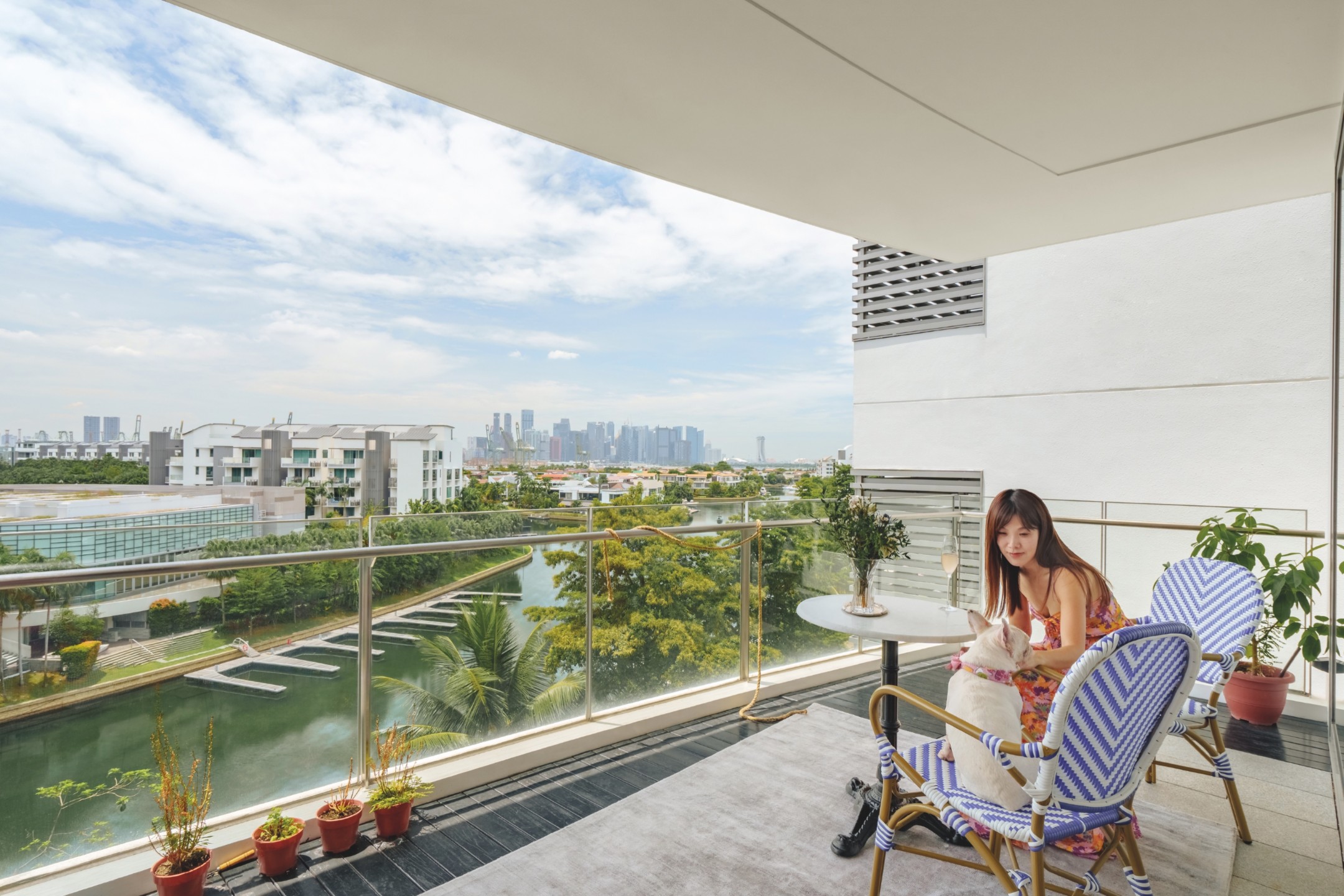
When the couple landed this unit, it was clear that an update was overdue. Its look and feel was a throwback to 2010 when the development was first completed, and its lanky layout presented some challenges. The redeeming factor? It was nestled in the exclusive enclave of Sentosa Cove.
“This was all about the views! The fact that this property is open to both the ocean and the marina, both with generous balconies, is just heaven,” says Tyler.
“Modern farmhouse was something that originated in the States, and I already had a couple of projects in that aesthetic. It was about seamlessly bringing in a coastal element, which I thought would be best presented through colour.”
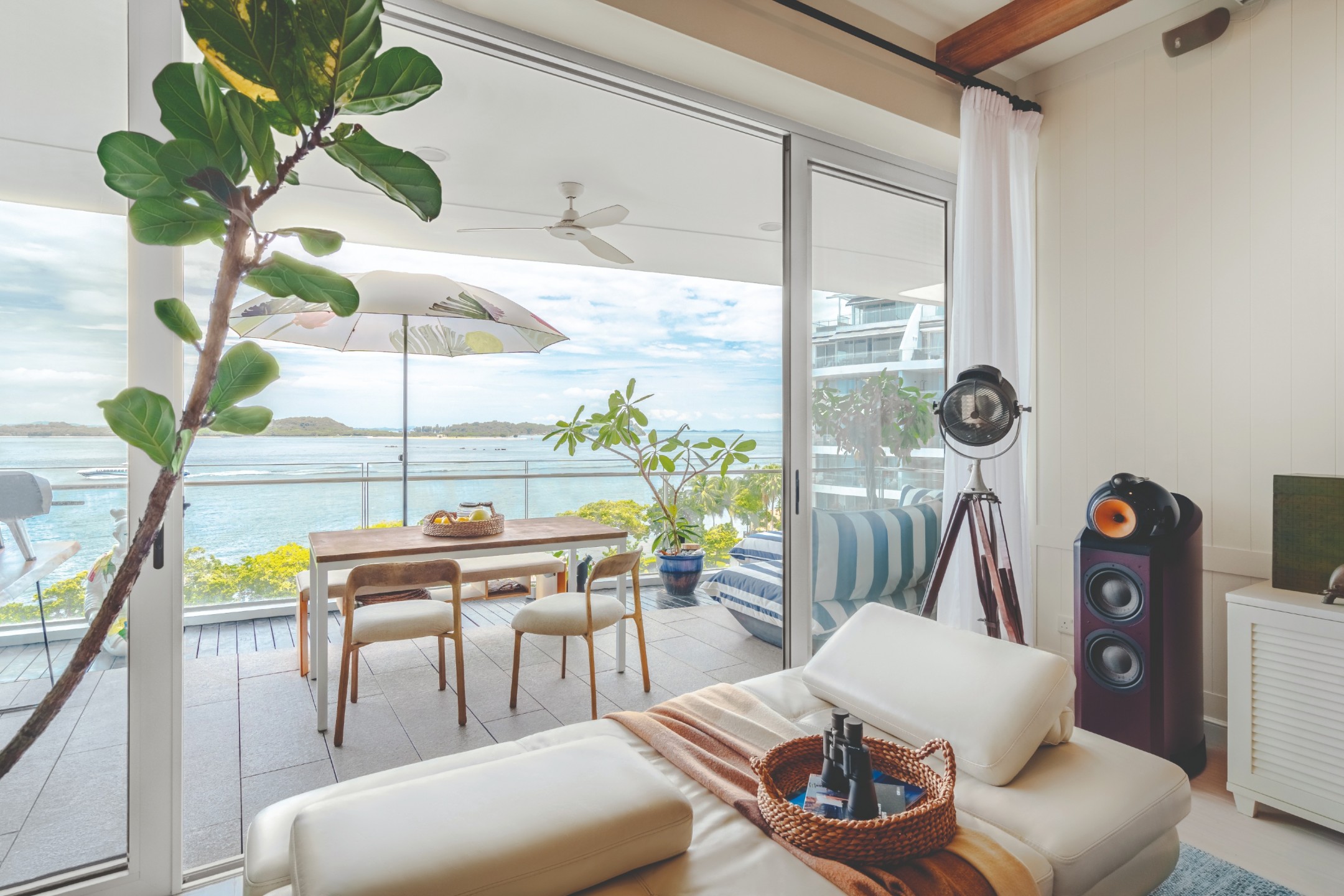
So, Tyler and the team opted for a light, bleached wood over the dark, reclaimed wood characteristic of the modern farmhouse theme. It mirrors the sands just within the sightline without compromising the apartment’s gravitas, with black tones creating contrast throughout the apartment.
During the creative process, one of the challenges Tyler and the team had to manage was not being too “on the nose” with either style.
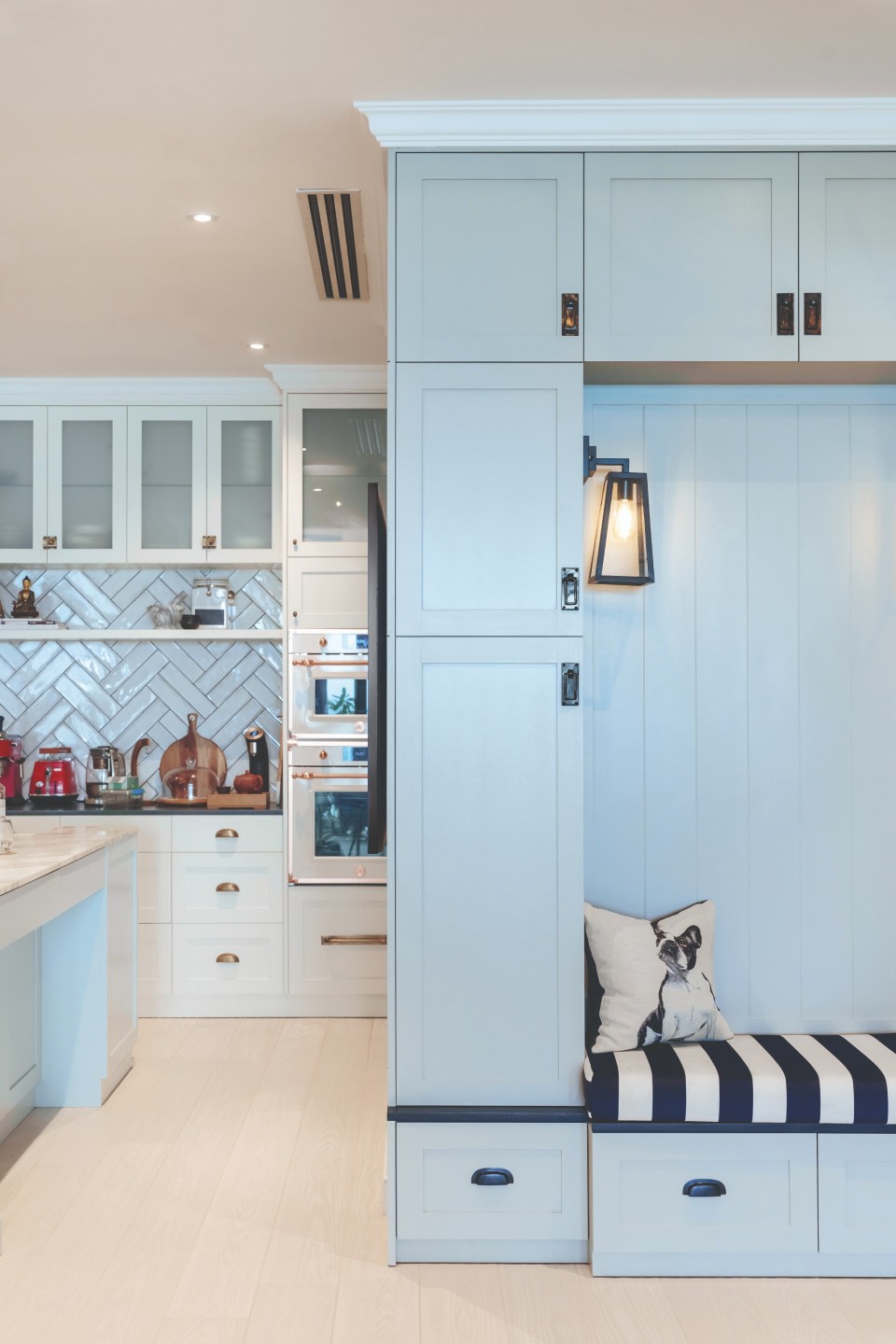
“Quite frankly, that would be boring. The whole idea of design and creating new spaces is to create! The client, of course, still needs to be at the forefront of all the decisions being made,” says Tyler.
“Right from the start, Tyler’s design instincts were impeccably aligned with our tastes,” recalls Chung. “This rapport wasn’t just about choices in colour or furniture; it was about us letting go and giving him the design freedom he needed.”
A local spin
“The original foyer layout was quite constrained with a box-like design. Rather than inviting, it created a sense of confinement and disrupted the natural flow of the home’s layout,” explained Chung.
Tyler’s answer was a mudroom – one of the “most iconic spaces” in a modern farmhouse; a spot to kick off one’s wellies, hang their winter coat, and store things they might need in the garden,
“Well, that obviously doesn’t happen in Sentosa, but we still needed a place to store shoes,” Tyler explains.
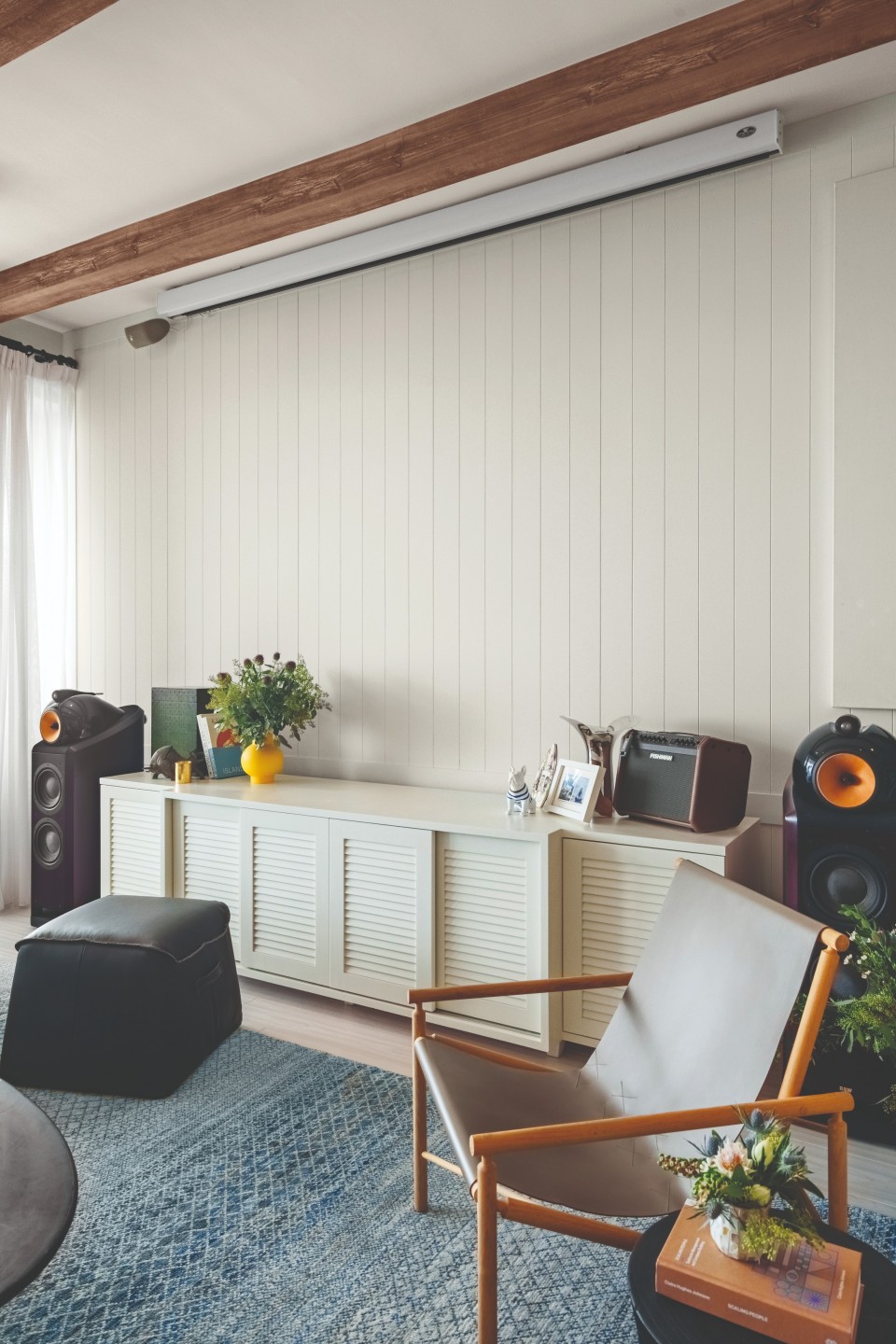
The original walls were demolished to make way for a built-in cabinet and settee referencing the seascape with its palette. Already, the beadboard detailing on the back wall, contrasted by the lamps and hardware, offers a peek at the modern farmhouse.
“It transformed a previously underwhelming entrance into a welcoming prologue to the home,” adds Chung.
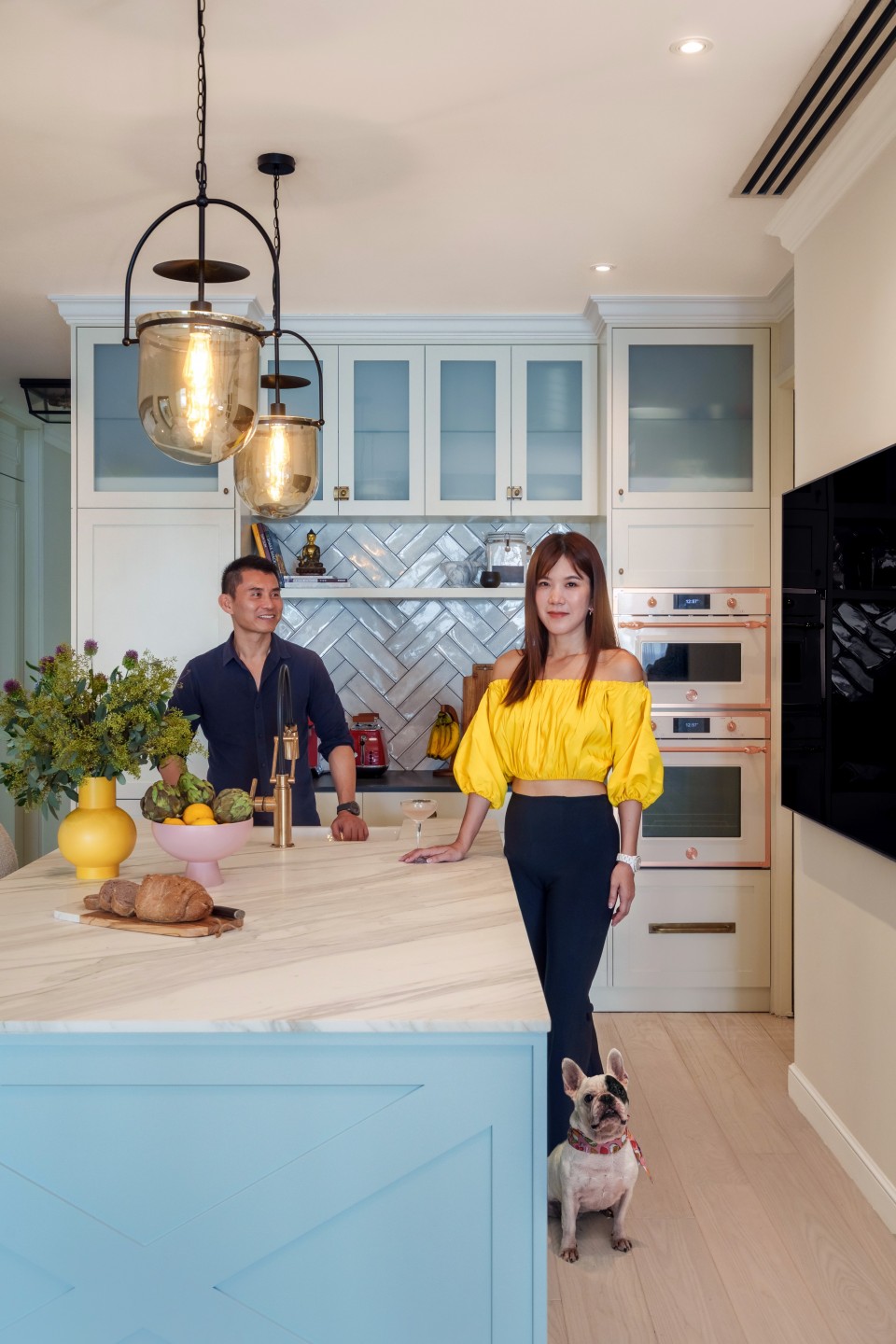
The foyer sets the tone for the open kitchen – a quintessential hallmark of both styles that needs to be celebrated, according to Tyler. But not all cliches have to be followed.
“The island, the central focus of this kitchen and the ubiquitous ‘heart of the home’, should be something special,” he asserts.
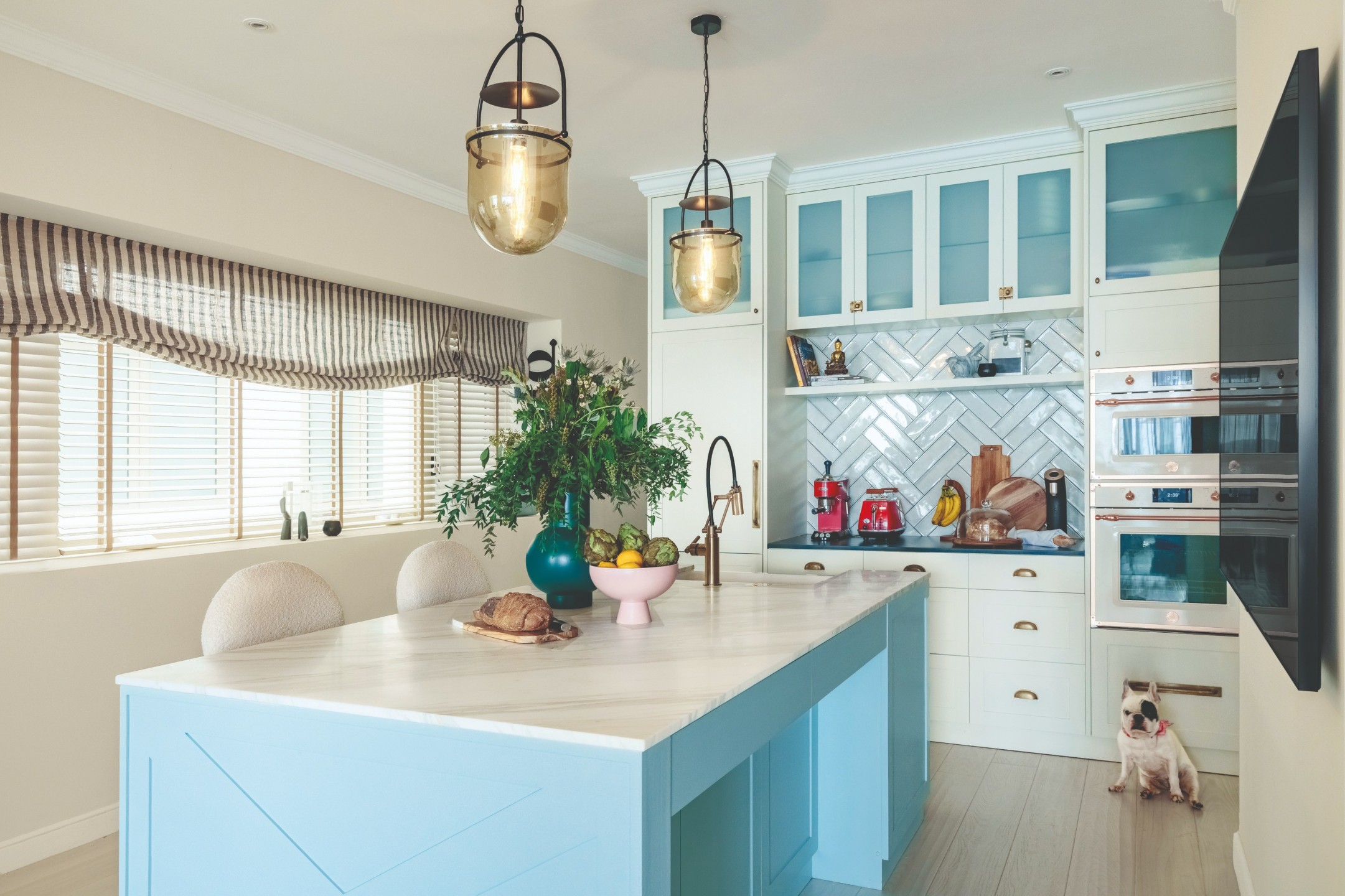
“A monochromatic kitchen in white would have been absolutely fine and acceptable, but to bring in the pop of colour with the island and change up the hardware and countertop materials for each side was very much intended.”
Against the wall, raw brass hardware offered the white cabinetry and dark countertop a warm glow. The island, on the other hand, featured matt black hardware that contrasted the robin egg blue.
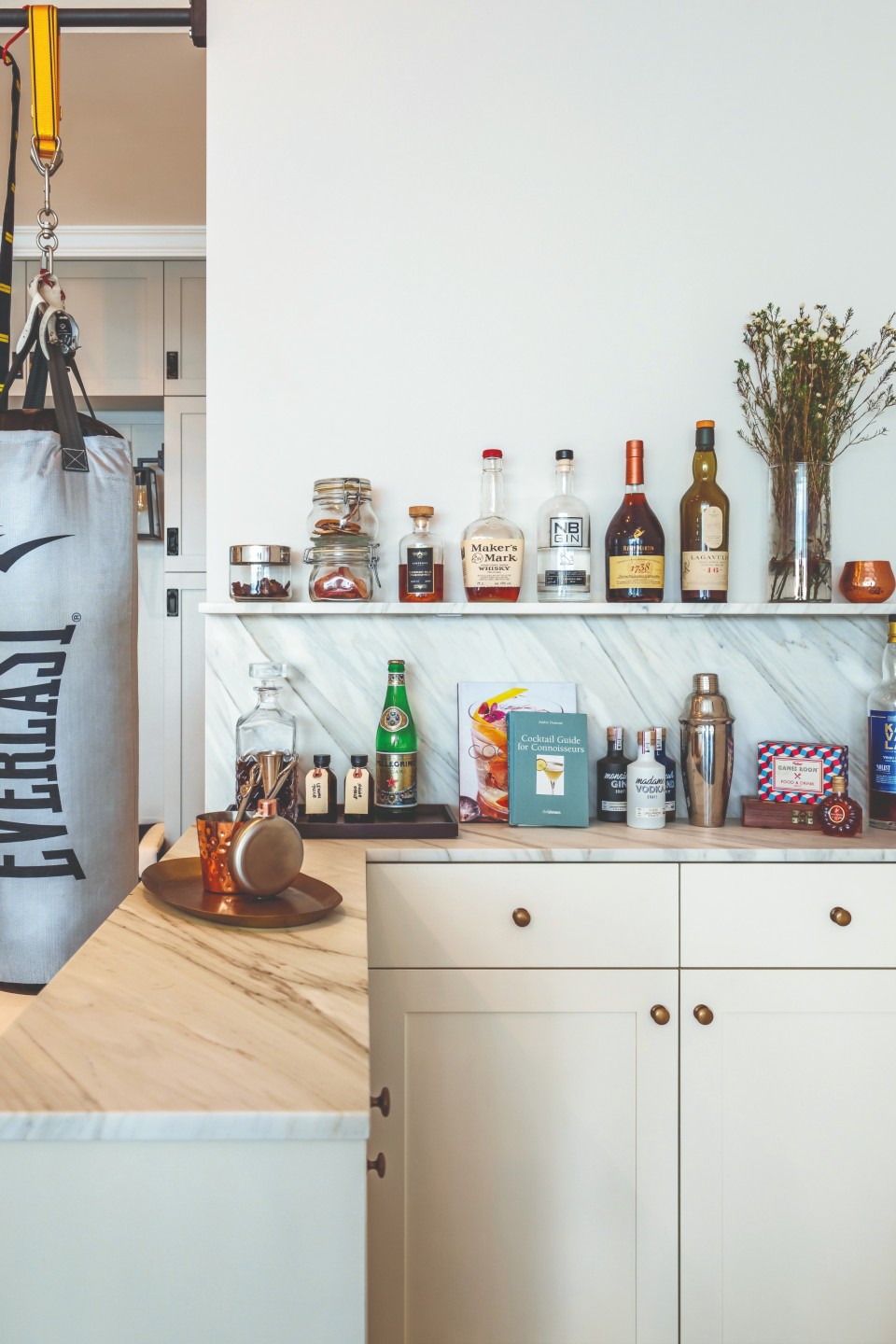
“Tyler’s expertise really shone through in the way he gently nudged us beyond our comfort zone,” says Chung.
“There were moments, undoubtedly, where his suggestions seemed daring – audacious, even – for our traditional inclinations. But we learned to trust his vision.”
Prized possessions
With the last slab of marble from the kitchen, Tyler and his team transformed an unused corner into an L-shaped bar that accommodated not just one, but two hobbies of Chung’s: mixology and boxing.
“The newfound ceiling height from the removal of the false ceiling gave us the perfect opportunity to install gymnastic rings and a full-size punching bag. Additionally, we crafted a bar for unwinding with a drink after a hectic day,” explains Chung.
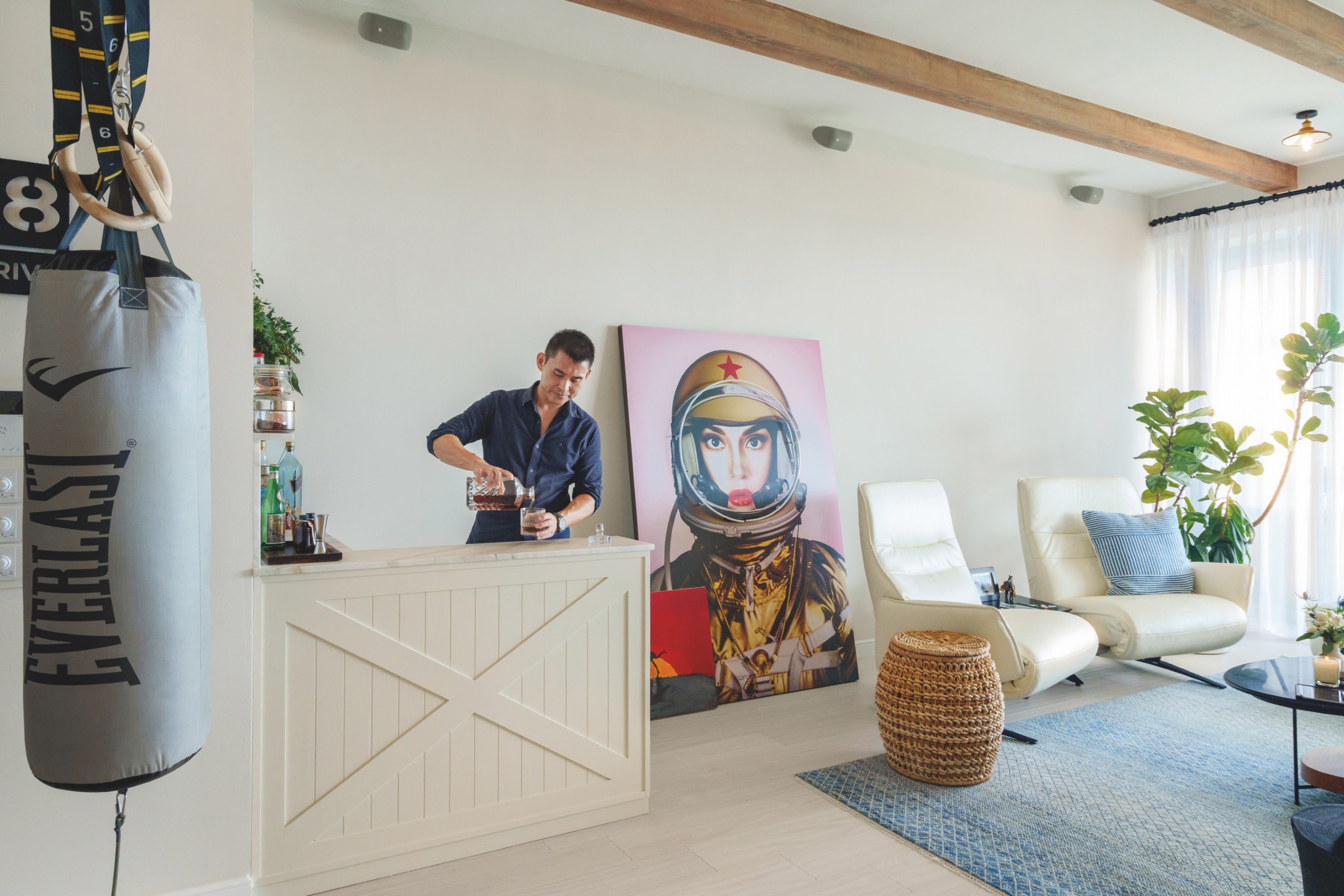
Tyler admits that it was initially hard for him to imagine integrating the utilitarian equipment into a finished space, but it helps that they looked like art pieces.
In the living room, Chung, whom Tyler calls “a bit of an audiophile”, has found his equipment and a new home: a custom sideboard with louvred doors set against wider headboard planks – an homage to farmhouse living. Equally on-brand were the faux beams on the ceiling, which the team created from scratch as reclaimed beams were a pain to source.
Here, the couple’s old furniture is now joined by pieces including Thomas Bina’s Olivia Coffee Table, the Amura Ease Armchair, and Jehan Gallery’s wool rug, aptly named “Modern Waves”.
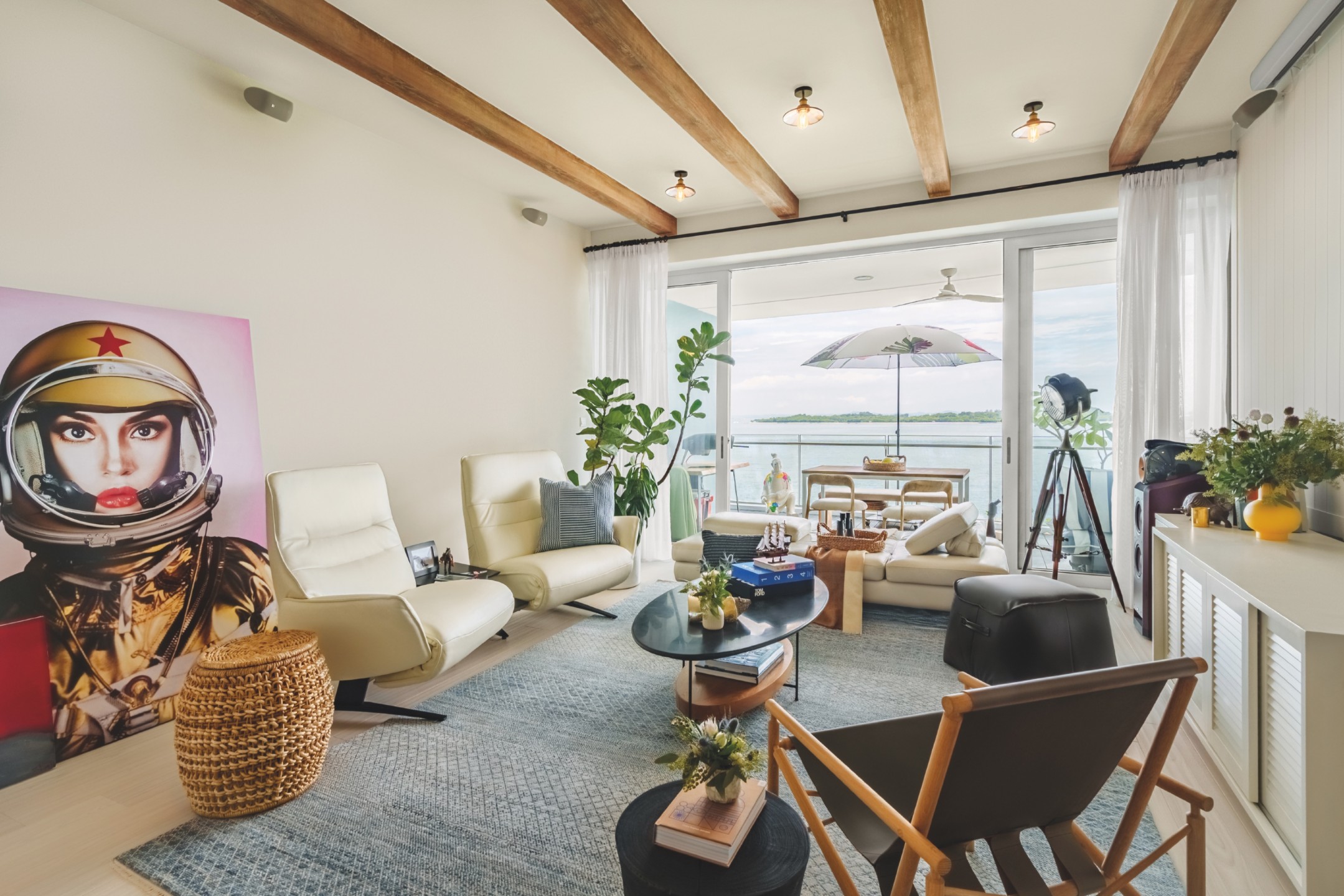
“The two-seater viewing chairs and large leather daybed were items they had brought with them from their last place and all I had to work with. So I decided to use pieces that had simple shapes, that were void of excessive ornamentation, and constructed of good materials to complement the stark modernity of the existing furniture,” he adds.
One properly segues from the country to the coast through the massive sliding doors, framing the panoramic view with a dark wooden rod and lightweight linen sheers that dance with the ocean breeze.
Tyler considers this the perfect spot to fire up a pizza, host a boozy brunch, or simply watch the cruise ships pull into port while sipping your morning cup of joe. But if you’d rather do just that in a hot tub with a glass of wine in hand, we’d have to point you to the bedroom.
Bed and bath
Inspired by luxury hotels around the world, the couple envisioned a freestanding bathtub in the bedroom.
“The tub was the most exciting feature, but it was also quite the mechanical challenge as we wanted to fill and drain a large amount of hot water where water shouldn’t theoretically be,” he explains.
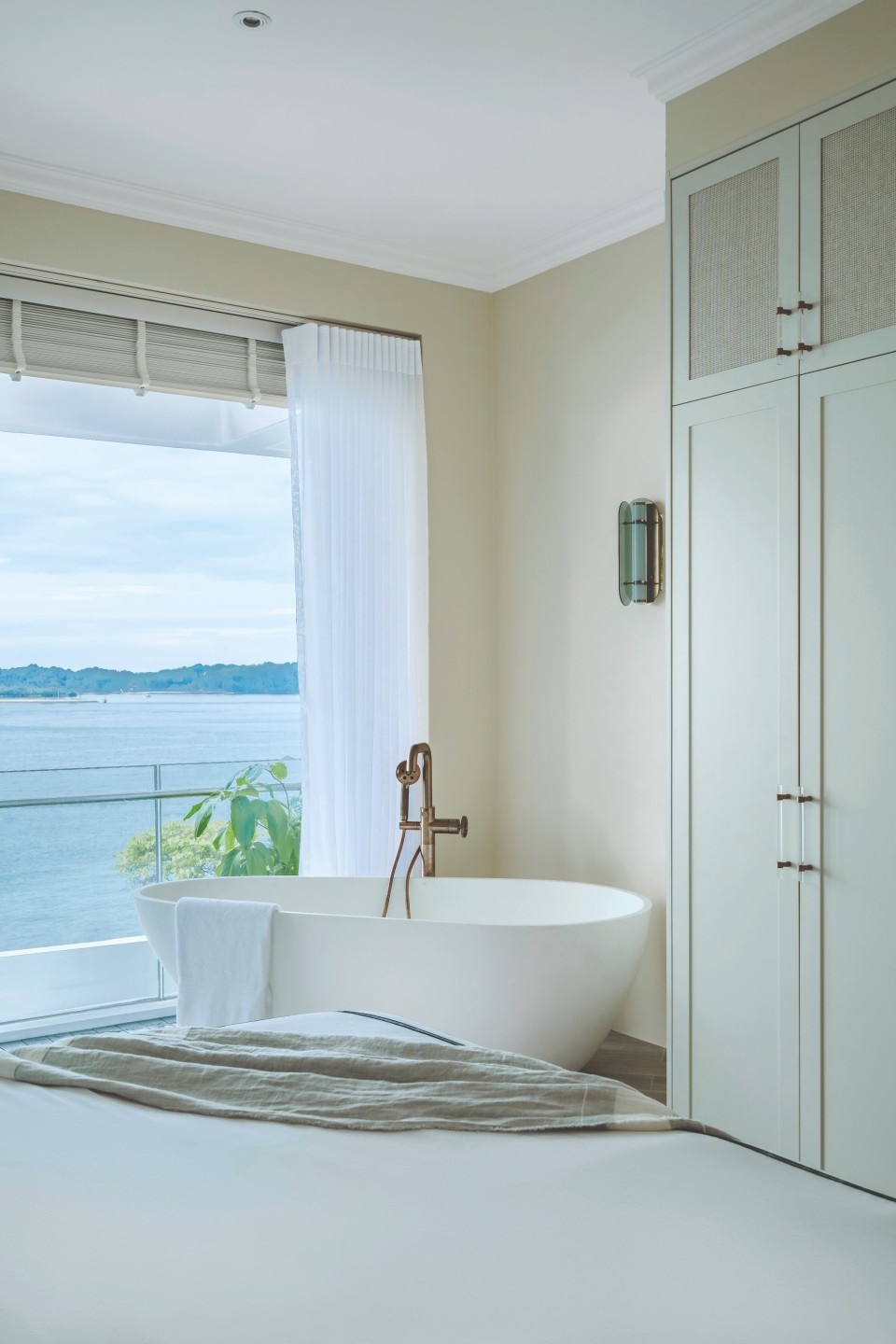
They worked around this by creating a small platform for the train – a move that turned out to be as functional as it was aesthetic.
“It inadvertently gave the modern freestanding tub a stage on which to be admired. The Freestanding Tub Filler was the obvious choice as its elegant engineering and artistry couldn’t be denied,” he adds.
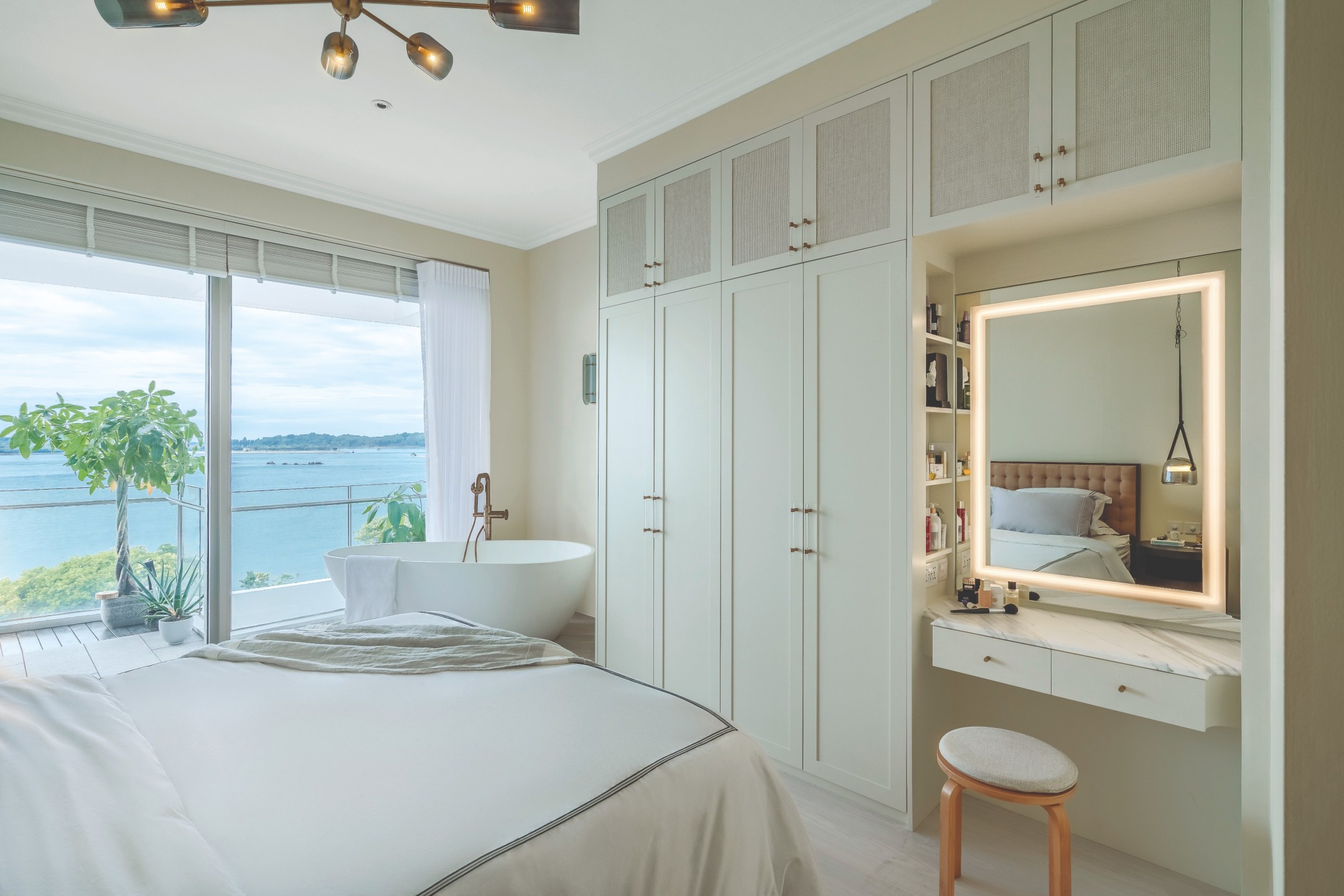
And the plumbing lines? Those were ingeniously concealed with a built-in wardrobe, fitted with the same shaker-style cabinets we saw in the kitchen. But to keep things bright and airy, the inset portions have been lightened with whitewashed rattan.
More closet space awaits in the walk-in wardrobe, where both styles – inherently rustic – take on a touch of sophistication.
“We decided that what was considered the maid’s room, albeit small, would be a jewel box of a walk-in closet. This area was carved out to showcase and store Catherine’s bag collection in a way that respected the designers,” he explains.

Mirrors were incorporated to enhance the sense of space, and for a final touch, the cabinetry features a delicate ebony inlay on each door and drawer, providing a boutique-like experience befitting its contents.
“Every guest who steps into our home is invariably met with a moment of awe and a speechless, jaw-dropping encounter,” says Chung.
“They immediately recognised that we’ve poured our hearts and taken bold risks to transform this space into a one-of-a- kind design.”



